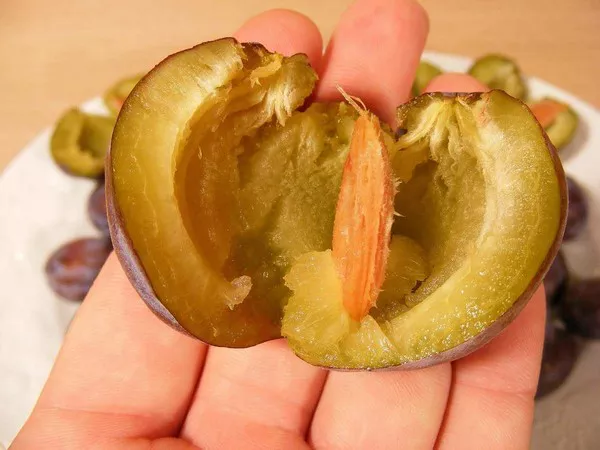Plants have long held a sacred and revered status in various cultures and traditions around the world. From ancient rituals to modern spiritual practices, certain plants are believed to possess transcendent qualities that facilitate healing, connection, and enlightenment. In this comprehensive guide, we embark on a journey to explore the spiritual essence of plants, unveiling the top 10 most spiritual plants revered for their mystical properties and profound significance in spiritual practices.
Top 10 Most Spiritual Plants
1. Sage (Salvia Officinalis):
Sage holds a prominent place in spiritual rituals and ceremonies across cultures, revered for its cleansing and purifying properties. Used in smudging rituals by indigenous peoples of North America, sage is believed to dispel negative energy and promote spiritual clarity and healing. Burning sage leaves releases aromatic smoke that is said to cleanse the environment and create a sacred space conducive to meditation and introspection.
2. Palo Santo (Bursera Graveolens):
Palo Santo, Spanish for “holy wood,” is a sacred tree native to South America cherished for its sweet, uplifting aroma and spiritual significance. Used in shamanic ceremonies and rituals, Palo Santo is believed to purify the energy field, attract positive vibrations, and enhance spiritual awareness. Burning Palo Santo sticks releases a fragrant smoke that is said to bring about a sense of peace, clarity, and connection to the divine.
3. Lavender (Lavandula):
Lavender, with its delicate purple blooms and calming fragrance, has long been associated with tranquility, relaxation, and spiritual harmony. Used in aromatherapy and spiritual practices, lavender is believed to promote inner peace, emotional balance, and spiritual well-being. Its soothing aroma is said to calm the mind, alleviate stress, and induce a state of deep relaxation conducive to meditation and spiritual contemplation.
4. Cannabis (Cannabis Sativa):
Cannabis, also known as marijuana or hemp, has been used for spiritual and medicinal purposes for thousands of years. Revered by ancient cultures for its psychoactive properties and spiritual significance, cannabis is believed to facilitate introspection, creativity, and spiritual enlightenment. Used in sacred ceremonies and rituals by various indigenous peoples, cannabis is regarded as a sacrament that promotes spiritual communion and connection to higher consciousness.
5. Ayahuasca (Banisteriopsis Caapi):
Ayahuasca, a powerful psychedelic brew native to the Amazon rainforest, is revered by indigenous shamans for its transformative and healing properties. Used in traditional ayahuasca ceremonies, this sacred plant medicine is believed to facilitate profound spiritual experiences, inner exploration, and emotional healing. The visionary effects of ayahuasca are said to reveal hidden truths, unlock spiritual insights, and catalyze personal growth and transformation.
6. Peyote (Lophophora Williamsii):
Peyote, a small spineless cactus native to North America, has been used ceremonially by indigenous tribes for thousands of years. Revered as a sacred plant teacher, peyote contains psychoactive alkaloids, including mescaline, which induce altered states of consciousness and spiritual insights. Used in peyote ceremonies for spiritual guidance, healing, and communion with the divine, this sacred cactus is regarded as a gateway to the spiritual realm.
7. Lotus (Nelumbo Nucifera):
The lotus flower holds profound symbolic significance in Eastern spiritual traditions, representing purity, enlightenment, and spiritual rebirth. Revered by Hindu, Buddhist, and Egyptian cultures, the lotus is believed to emerge from murky waters to bloom into a pristine flower, symbolizing the journey of the soul towards spiritual awakening and transcendence. Lotus flowers are often used in meditation practices and rituals as a focal point for contemplation and inner transformation.
8. Mugwort (Artemisia Vulgaris):
Mugwort, a common herbaceous plant native to Europe and Asia, has long been revered for its spiritual and medicinal properties. Used in various spiritual practices, mugwort is believed to enhance psychic abilities, induce lucid dreaming, and promote spiritual clarity and insight. Burning mugwort leaves or using them in herbal preparations is said to facilitate astral projection, divination, and spiritual journeying.
9. San Pedro Cactus (Echinopsis Pachanoi):
San Pedro cactus, also known as Huachuma, is a sacred plant native to the Andean regions of South America. Revered by indigenous shamans for its visionary and healing properties, San Pedro is used ceremonially to induce altered states of consciousness, spiritual insights, and emotional healing. The psychoactive alkaloid mescaline, found in San Pedro, is believed to facilitate spiritual growth, connection to nature, and self-discovery.
10. White Sage (Salvia Apiana):
White sage, a species of sage native to the southwestern United States, holds sacred significance in Native American traditions and spiritual practices. Used in smudging rituals for purification and cleansing, white sage is believed to dispel negative energy, restore balance, and create a sacred space conducive to prayer, meditation, and spiritual connection. Burning white sage leaves is said to invite blessings, protection, and spiritual guidance into the environment.
Conclusion:
As we conclude our exploration of the top 10 most spiritual plants, we are reminded of the profound connection between plants and spirituality, and the transformative power they hold in facilitating healing, insight, and spiritual growth. Whether used in traditional ceremonies, rituals, or personal practices, these sacred plants serve as gateways to the divine realm, guiding seekers on their spiritual journey towards enlightenment, awakening, and self-discovery. By honoring and respecting the wisdom of these spiritual allies, we cultivate a deeper reverence for the natural world and our interconnectedness with all living beings.
You Might Be Interested In:

























